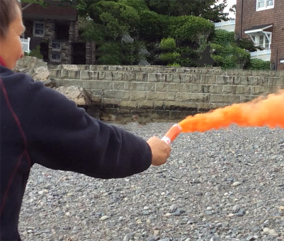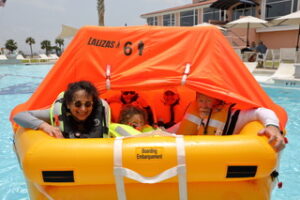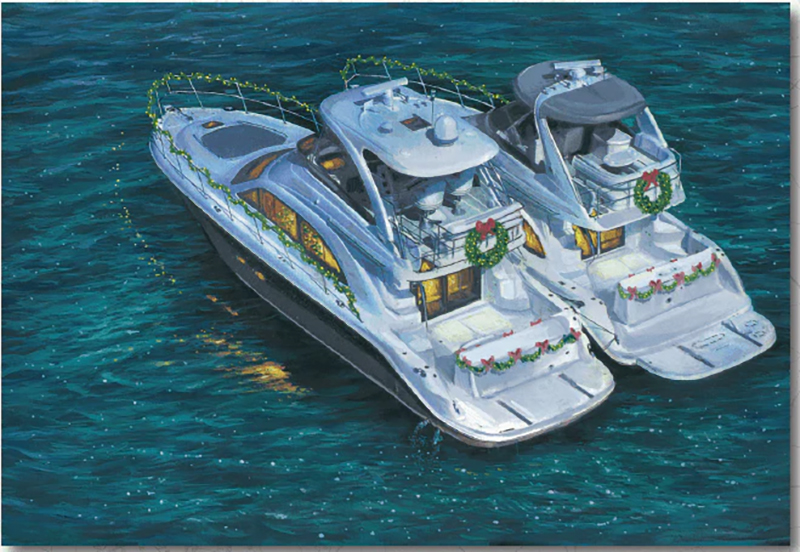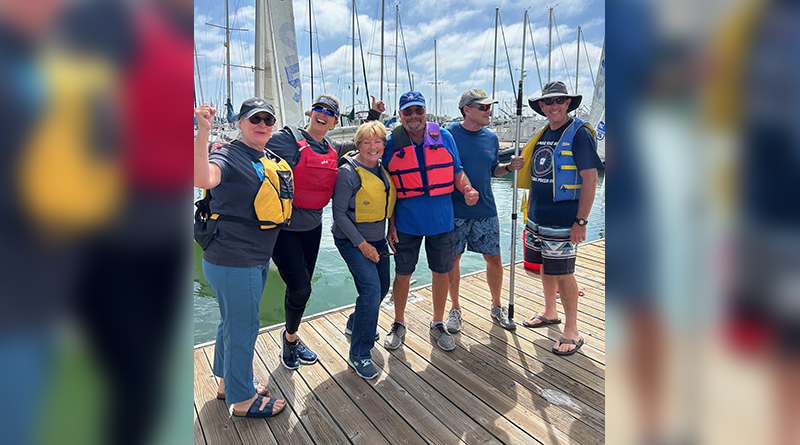MARINA DEL REY — Following National Safe Boating Week, which took place last month, the Southern California Yachting Association (SCYA) is once again presenting a crucial educational opportunity for mariners of all stripes: the 2025 US Sailing Sanctioned International Offshore Safety at Sea Course. Scheduled for August 16 and 17, 2025, and hosted by the California Yacht Club in Marina del Rey, this comprehensive program is designed to equip cruisers, power boaters, and sailboat racers alike with the essential knowledge and hands-on skills needed to navigate the challenges of the open ocean safely and confidently.

For anyone who has ever pondered the daunting question of what to do if a crew member goes overboard in rough seas, how to weather an unexpected storm far from port, or how to choose the right emergency communications equipment, this course offers indispensable answers. It addresses the practical realities of offshore voyaging, empowering participants to anticipate, prevent, and effectively respond to maritime emergencies.
Why This Course is Essential: A Gold Standard in Safety Education
The Safety at Sea course isn’t just another boating class; it’s the only program in the United States sanctioned by World Sailing, the international governing body for the sport, to issue Safety at Sea certificates. This means that participants who successfully complete the course will receive a US Sailing Safety at Sea certificate, a credential recognized globally and valid for five years from its issue date. For those participating in long-distance and international offshore races such as the ARC, Newport to Bermuda, Newport to Ensenada, TransPac, or Pac Cup, this certification is often a mandatory requirement, complying with World Sailing Offshore Special Regulations (Appendix G compliant, ISAF SER Categories 4.3.1 and 4.3.2, and World Sailing OSR Categories 0, 1, and 2).

More than 2,500 sailors annually attend these crucial safety courses across North America, many bringing their entire families and crews to benefit from the collective knowledge. The curriculum is meticulously approved by US Sailing, with particular attention paid to the unique conditions and challenges prevalent in Southern California’s waters. The content is tailored to a wide range of vessels and experience levels, making it appropriate for small boats, large yachts, monohulls, multihulls, and even powerboats, whether they operate nearshore or venture far offshore.

Course Structure and Options: Tailored Learning for Every Mariner
The 2025 program offers flexible options to cater to different needs and experience levels, though the two-day option comes highly recommended for first-time certificate seekers.
- Option 1: Two-Day Course (Saturday, Aug. 16, and Sunday, Aug. 17): This is the recommended choice for those seeking their first International Offshore Safety at Sea with Hands-on Training Certificate. It provides a comprehensive dive into all topics, including valuable bonus content.
- Option 2: One-Day, Hands-On ONLY (Sunday, Aug. 17): This option is also for first-time certificate seekers who have completed the necessary online prerequisites.
- Option 3: One-Day, REFRESHER (Sunday, Aug. 17): Designed for existing certificate holders whose International Offshore Safety at Sea with hands-on training Certificates (bearing the World Sailing logo) are less than seven years old.
A critical prerequisite for all attendees seeking the World Sailing-compliant US Sailing Sanctioned International Offshore Safety at Sea Hands-on Training Certificate is the completion of specific online units within 365 days prior to attending the in-person course. There are no exceptions to this rule, which was mandated by the Safety at Sea Subcommittee for all courses held from January 1, 2021, onwards. These prerequisite online units are a separate cost and are not included in the registration fee for any of the course options. First-time certificate seekers (Options 1 & 2) must complete the Online Safety at Sea Offshore Course (units 1-15), while existing certificate holders (Option 3) must complete the Online Safety at Sea Offshore Course Upgrade (units 11-15). SCYA is responsible for verifying these prerequisite certifications using the US Sailing attendance lookup tool.
Comprehensive Topics and Invaluable Hands-On Training
The course curriculum is extensive, covering 8-10 units of vital information for offshore safety. Topics typically include:
- Giving Assistance: Procedures for aiding other vessels in distress.
- Personal Safety Gear: Understanding, selecting, and properly using life jackets, harnesses, and tethers.
- Care and Maintenance of Safety Gear: Ensuring all safety equipment is in optimal working condition.
- Fire Safety: Prevention, detection, and suppression of fires on board.
- Crew Overboard: Rapid response and recovery techniques.
- Cold Exposure: Recognizing and treating hypothermia and frostbite.
- Crew Health: Basic medical care and managing injuries at sea.
- Marine Weather: Understanding forecasts, identifying hazardous conditions, and developing weather strategies.
- Heavy Weather: Tactics for handling strong winds and rough seas.
- Storm Sails and Reefing: Proper deployment and use of storm sails and reefing techniques to reduce sail area.
- Damage Control: Addressing leaks, broken rigging, and other structural damage.
- Search and Rescue: Understanding SAR procedures and cooperating with rescue efforts.
- Signals: Proper use of distress signals.
- Emergency Communications: Utilizing VHF, satellite phones, EPIRBs, and other communication devices.
- Life Rafts: Deployment, boarding, and survival techniques.
Crucially, the course includes extensive hands-on training, providing practical experience in a controlled environment. This includes realistic scenarios such as boarding a life raft (often in a pool setting), working with inflatable life jackets, deploying pyrotechnics, and hands-on firefighting techniques. These practical sessions are invaluable for building confidence and muscle memory for real-world emergencies.
Meet the Experts: A Stellar Lineup of Sailing and Safety Professionals
The SCYA US Sailing Safety at Sea Course prides itself on its faculty, moderated and taught by an exceptional group of experienced, lifelong sailors who are recognized as some of the top names in sailing and safety education. Their diverse backgrounds and extensive real-world experience bring the curriculum to life.
- Captain Debbie Huntsman: As a US Sailing Approved Moderator and Instructor, Captain Huntsman’s journey into boating safety education began in 1997, applying skills honed through decades of experience. She has served the sailing community in various capacities with state, federal, and non-profit agencies, raced extensively, and dedicated years to marine law enforcement and first responder roles, including patrolling San Diego Harbor post-9/11. Her deep practical knowledge makes her a highly recommended guide for first-time certificate seekers.
- Captain James Lee: A second-strong Moderator and Instructor, Captain Lee is a former engineering faculty member and offshore sailing instructor at the US Naval Academy. An ABYC Master Technician with a USCG Master license, he is the current Commodore of King Harbor Yacht Club and actively sails his own vessels, LA MER and MARE’ZIA. His extensive involvement in the sailing community and national speaking engagements underscore his expertise.
- Dave Robertson: With over 50 years of experience as a sailboat rigger/outfitter in Marina Del Rey, Dave Robertson is a Southern California native with an extensive sailing pedigree spanning three decades in safety. He has sailed worldwide, competing in major international ocean races across the Atlantic and South Pacific, and modestly notes, “I don’t know everything, but I know enough people to find out just about anything.”
- Dr. Christian Sloane, MD, FACEP: Growing up sailing in the San Francisco Bay Area and competing at UC Berkeley, Dr. Sloane brings critical medical expertise to the team. Graduating from UCSD medical school and specializing in emergency medicine, he serves as an emergency physician at UC San Diego and medical director for Mercy Air Services. He and his wife actively sail their Amel Super Maramu around Southern California.
- Captain Marie Rogers: With nearly 30 years of active boating experience, Captain Rogers holds a US Coast Guard 50 Ton Master’s license, performing yacht deliveries along the California coast, to Mexico, and even to Hawaii and back. Since 2012, she has been a boating instructor for “Women on the Water” and has served as Commodore for Los Angeles Yacht Club and a Director for both SCYA and US Sailing.
- Captain Leslie Washburn: Raised sailing the Great Lakes, Captain Washburn is a USCG licensed captain with a 50GTS MMC. She has accrued over 20,000 bluewater miles through cruising, chartering, and deliveries, including Atlantic and Pacific crossings. A competitive sailor with podium finishes in numerous races, her resume includes navigating Force 10 conditions in the Atlantic with an injured crew and surviving a wreck on a South Pacific reef — experiences that promise invaluable insights.
- John Jourdane: Recognized as one of the most experienced offshore sailors globally, John Jourdane has sailed over 300,000 miles, including 54 crossings between the West Coast U.S. and Hawaii, 12 Atlantic crossings, and three circumnavigations of the world, including two Whitbread Round the World Races. Author of several books, he also teaches popular Weather for Sailors classes internationally.
- Ernie Richau: A veteran ocean racer, Ernie Richau has been actively involved as a navigator on the legendary Ragtime, preparing for Transpacific 2025. Richau will share his expertise on marine weather, helping participants understand how to best use weather information for safe passage and tactical advantage.
The SCYA US Sailing Sanctioned International Offshore Safety at Sea Course syllabus and schedule will be posted on the SCYA website, with updates emailed to registered participants. For any questions, prospective attendees are encouraged to contact Jodi Masters-Gonzales, SCYA Vice Commodore, at [email protected], allowing a 48-hour response time. Mariners are urged to spread the word about this vital event, sharing the opportunity with fellow sailors and club members to enhance safety across the Southern California boating community.





